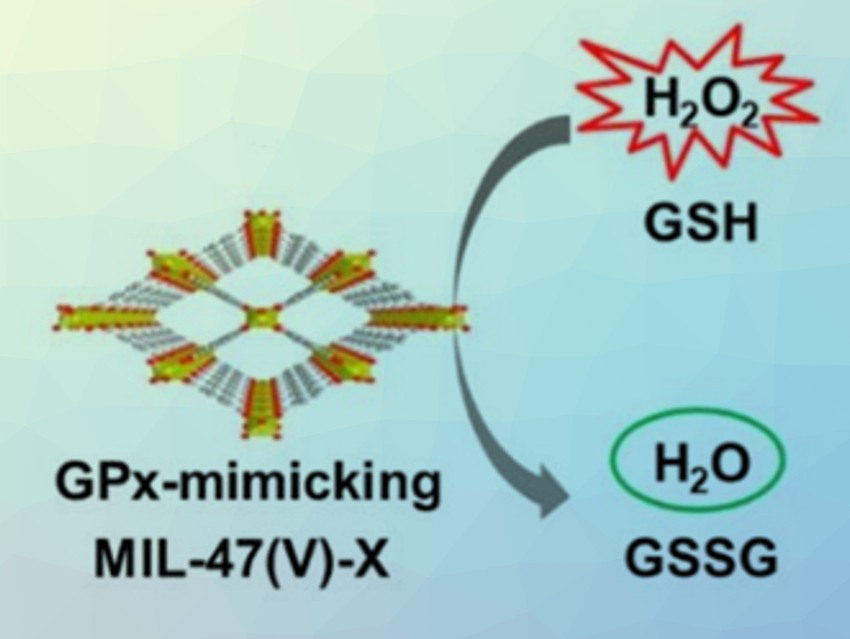Nanozymes are enzyme-mimicking nanomaterials. They can have advantages over both natural enzymes and conventional artificial enzymes. While a few glutathione peroxidase (GPx)-mimicking nanozymes have been developed, such nanozymes have rarely been explored for use in therapy. Glutathione peroxidase plays an important role in maintaining the metabolic balance of reactive oxygen species (ROS), which can be relevant for diseases such as cancer, inflammation, and cardiovascular issues.
Hui Wei, Nanjing University, China, and colleagues have developed a ligand-engineering strategy to tune the GPx-mimicking activity of a metal–organic framework (MOF) nanozyme. The team modulated the GPx-mimicking activities of vanadium-based MIL-47(V) MOFs by varying the substitution of their terephthalate ligand, using F, Br, NH2, CH3, or OH groups. The synthesis of MIL-47(V)-X MOFs was carried out via a microwave method.
The GPx-mimicking catalytic activities of the nanozymes were investigated using an assay in which the nanozyme catalytically couples the reduction of H2O2 to the oxidation of glutathione (GSH) to glutathione disulfide (GSSG). MIL-47(V)-NH2 exhibited the highest activity among the resulting isostructural MOFs. In vivo experiments using mouse models showed an excellent antioxidation ability for MIL-47(V)-NH2, which alleviated the inflammatory response for both ear inflammation and colitis. This work shows that a GPx-mimicking nanozyme alone can be used in anti-inflammation therapy.
- Ligand-dependent activity engineering of glutathione peroxidase-mimicking MIL-47(V) metal–organic framework nanozyme for therapy,
Jiangjiexing Wu, Yijun Yu, Yuan Cheng, Chaoqun Cheng, Yihong Zhang, Bo Jiang, Xiaozhi Zhao, Leiying Miao, Hui Wei,
Angew. Chem. Int. Ed. 2020.
https://doi.org/10.1002/anie.202010714




